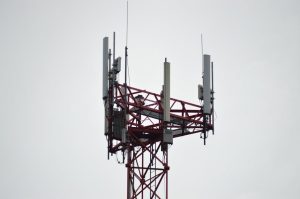Ericsson Advances Mission-Critical Connectivity with 5G, AI, and Satellite Solutions
Ericsson is intensifying its efforts in mission-critical connectivity to meet the demands of industries such as public safety, defense, utilities, and transport. These sectors require resilient, secure networks capable of maintaining uptime and reliability at all costs. As reported by Todd Ashton, Head of Enterprise and Mission Critical at Ericsson Europe, Middle East, and Africa, mission-critical networks are distinct for their unparalleled dependability and durability. These systems, essential for safeguarding citizens and sustaining societal functions, are increasingly powered by innovations in AI, satellite technology, and 5G connectivity.
The Evolution of Mission-Critical Networks

Pexels
The landscape of mission-critical communications is undergoing a seismic shift as traditional systems like TETRA and GSM-R make way for broadband-enabled solutions. These advanced networks support video streaming, AI-driven analytics, and real-time data transmission, facilitating smarter decision-making and automated safety measures. For instance, the rail industry has embraced 5G technology to revolutionize logistics, enhance operational safety, and implement automation. According to Ashton, Europe and the GCC regions are at the forefront of adopting these transformative solutions.
Ericsson has been instrumental in deploying robust networks across the globe. Collaborations such as their public safety network initiative in the UK with IBM and a high-profile partnership with Airbus in Europe showcase the company’s dedication to digitalizing industrial processes. Another notable project includes their development of a core network for Thuraya, the satellite arm of UAE-based G42. These endeavors illustrate the convergence of satellite and terrestrial networks, which is crucial for operations in remote or challenging environments like deserts or offshore areas where fiber-based infrastructure is not viable.
AI and Sustainability in Mission-Critical Systems

Pexels
Artificial intelligence is proving to be a cornerstone for both operational efficiency and safety in mission-critical networks. Ashton highlighted that AI enables advanced situational awareness, helping emergency services connect seamlessly and reducing downtime through self-healing network capabilities. Furthermore, AI optimizes energy use by powering down inactive systems, contributing significantly to sustainability efforts.
Private networks tailored for industries such as mining and utilities further showcase the integration of AI. In mining, for example, 5G and AI technologies automate processes like ventilation control, reducing energy consumption and ensuring workplace safety. Ashton also pointed out that Sweden is leading the market in mining automation, providing innovative solutions to this traditionally resource-intensive industry. The ongoing digitalization across EMEA regions presents an opportunity for even greater advancements.
Emerging Trends and Opportunities

Pexels
Ericsson is eyeing emerging sectors like drone detection, digital airspace management, and rail automation, as governments and enterprises worldwide pursue more intelligent and reliable infrastructure. These developments create significant opportunities for mobile operators, who already possess the spectrum required to support next-generation networks. Together with Ericsson’s cutting-edge technology, they are well-positioned to advance mission-critical connectivity further.
The convergence of 5G, AI, and satellite technology signals a new era for mission-critical networks. By addressing the specific needs of industries such as public safety, utilities, and transport, Ericsson is not only enhancing operational efficiency and safety but also laying the foundation for a more connected and resilient future. These advancements hold the potential to revolutionize industries and improve societal functionality on a global scale.



